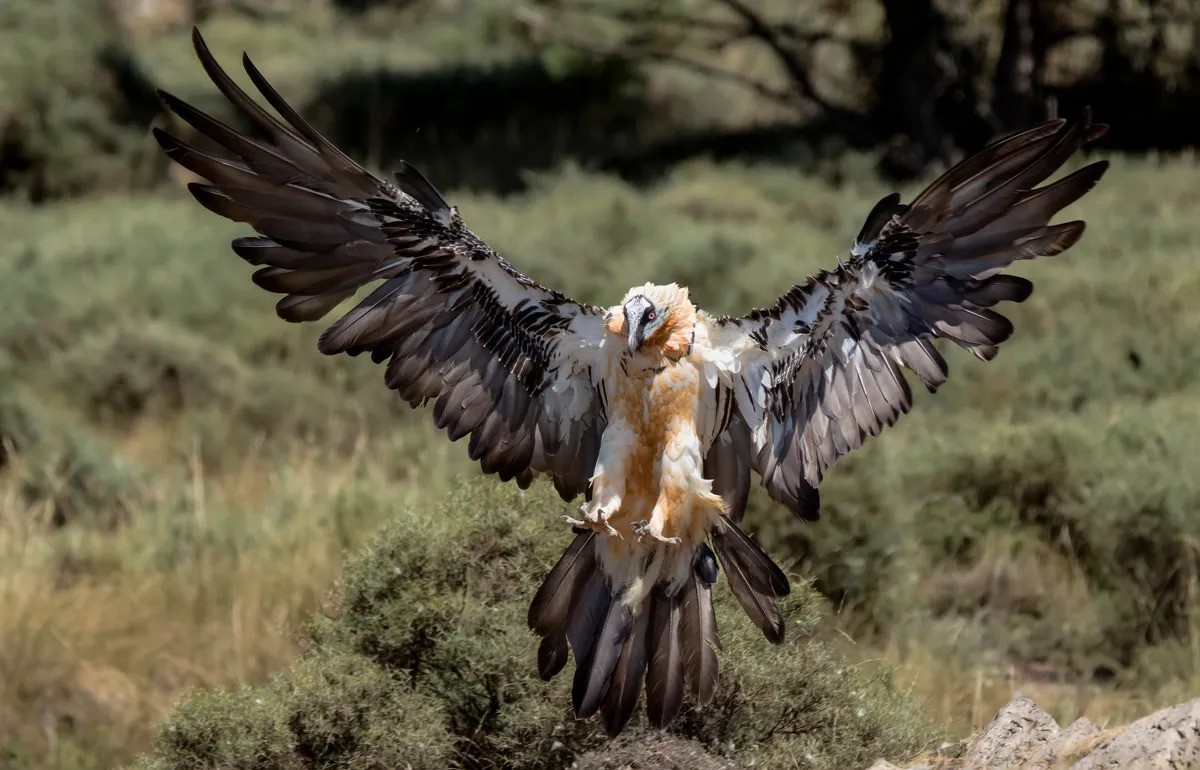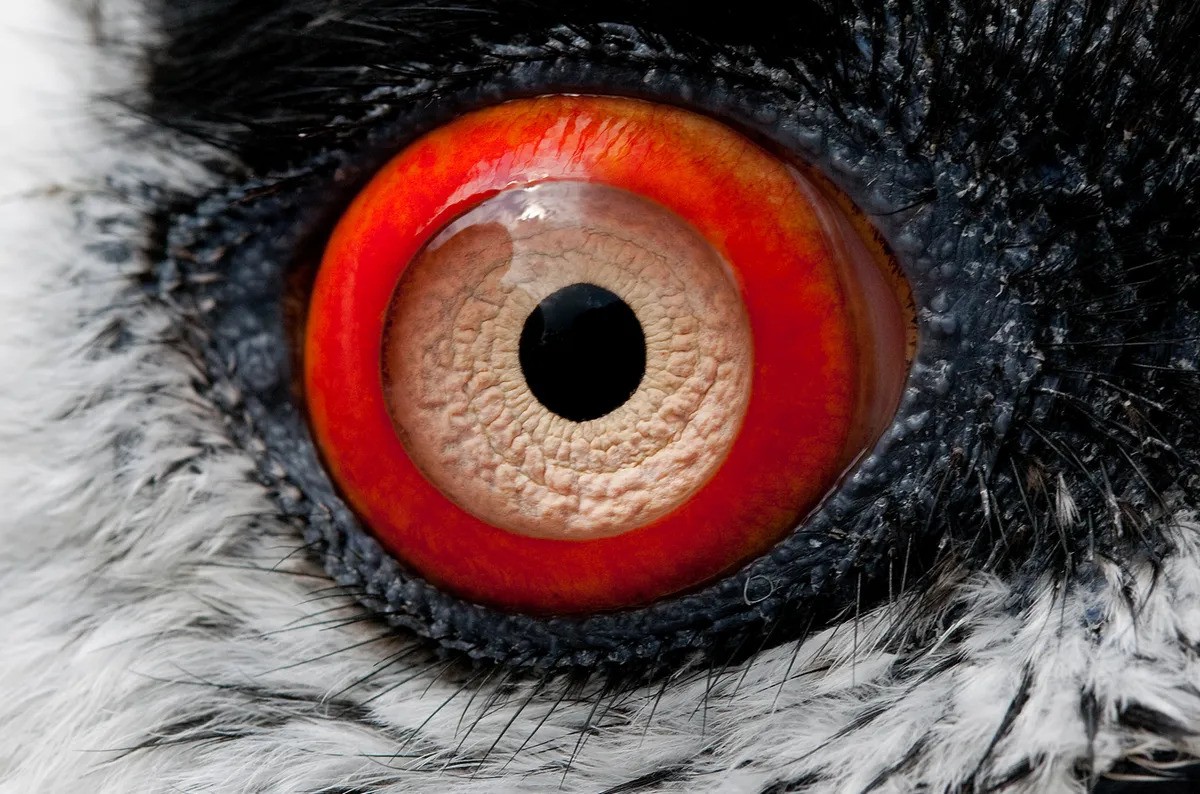Brace yourself to meet the Lammergeier, a bone-crushing bearded vulture that dyes its feathers red with baths in springs of iron-rich mud. As tough as it appears, the intense-looking vulture has been wiped out from much of its historic range and continues to face existential threats in parts of its habitat.
The species (Gypaetus barbatus) is an Old World vulture that stands at around 100 to 115 centimeters (39 to 45 inches) tall with a wingspan of approximately 2.5 to 2.85 meters (~8 to 9 feet), comparable in size to some of North America’s large raptors.
They’re a strikingly beautiful bird to look at. Their head is off-white with sharp eyes surrounded by a bold red-orange ring. Their intense eyes are further highlighted by a strip of jet-black feathering that extends down to their beak, like a bandit mask. Beneath their break is a spikey tuft of feathers, hence their English name.
As adults, their feathered body is typically dark gray, rusty, and whitish in color. However, their light plumage is often tinged with rusty orange due to the birds’ habit of bathing in iron-rich soil and sulfuric springs, giving them a fiery hue.

The Lammergeier has an impressive wingspan.
Image credit: Andrea Vergani/Shutterstock.com
The National Audubon Society explains there are two schools of thought behind the bearded vulture’s red-tinted bathing behavior. One explanation is that it’s a “display of prowess”. Since the iron-rich springs are hidden among the mountains, only the most adept vultures can find them, thereby demonstrating their valor to mates and rivals. The other explanation is that iron oxide helps to fend off bacteria, which are rife in the rotten meat they enjoy.
Bearded vultures could once be found across many of the mountain ranges that carve through the vast landmasses of Africa and Eurasia. In Europe, their habitat historically extended across all the mountain ranges in the south of the continent, from western Spain across the Alps to the Balkans.
However, they now occupy just small parts of the Pyrenees, the Sierra Nevada in Spain, and Alpine mountain ranges, along with small populations on the Mediterranean islands of Corsica and Crete. They’re occasionally spotted in parts of Western Europe, including the UK, albeit very rarely.

Like most vultures, lammergeier have excellent eyesight, which helps them find carcasses from a great height.
Image credit: slowmotiongli/Shutterstock.com
They are sometimes referred to as Lammergeier, which means something along the lines of “lamb vulture” in German because of their reputation for snatching sheep. True to the stereotype of vultures, the species is a scavenger, living primarily on medium-sized ungulates, like sheep, goats, ibex, and so on.
Meat, however, isn’t what they are after. The bearded vulture is the only bird in the world that eats primarily bones, with skeletal matter making up 85 to 90 percent of its diet.
Their big, strong claws are beautifully adapted to the task of breaking bones and obtaining nutrients from within the marrow. They’re also armed with a belly full of unbelievably strong stomach acid, which helps to break down their unusual taste in foods. If the bones are too large to swallow, bearded vultures will go to great heights and drop the remains onto rocky surfaces, breaking them into “bite-size” bits.
For this reason, they’re often called “quebrantahuesos” in Spanish, which means bone breaker.
Source Link: Lammergeier: The Bearded Vulture Is A Bone-Eating Badass That Bathes In Iron